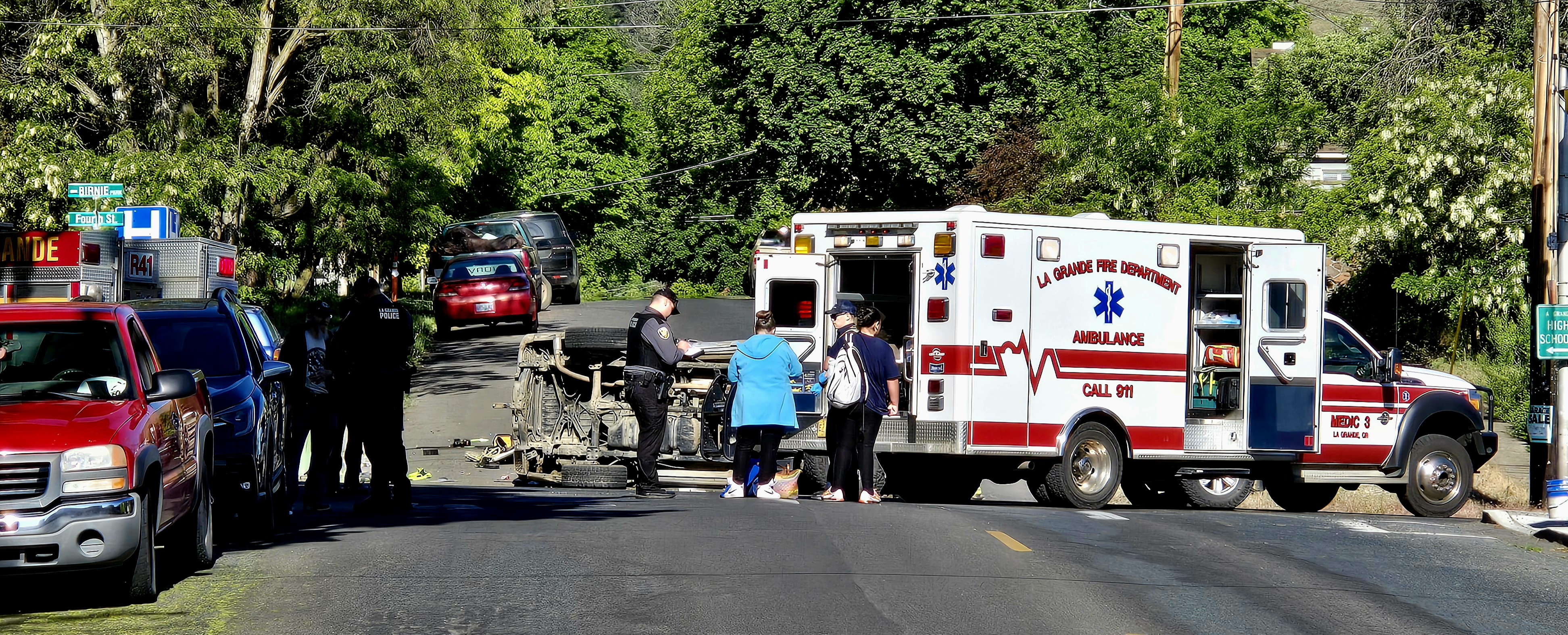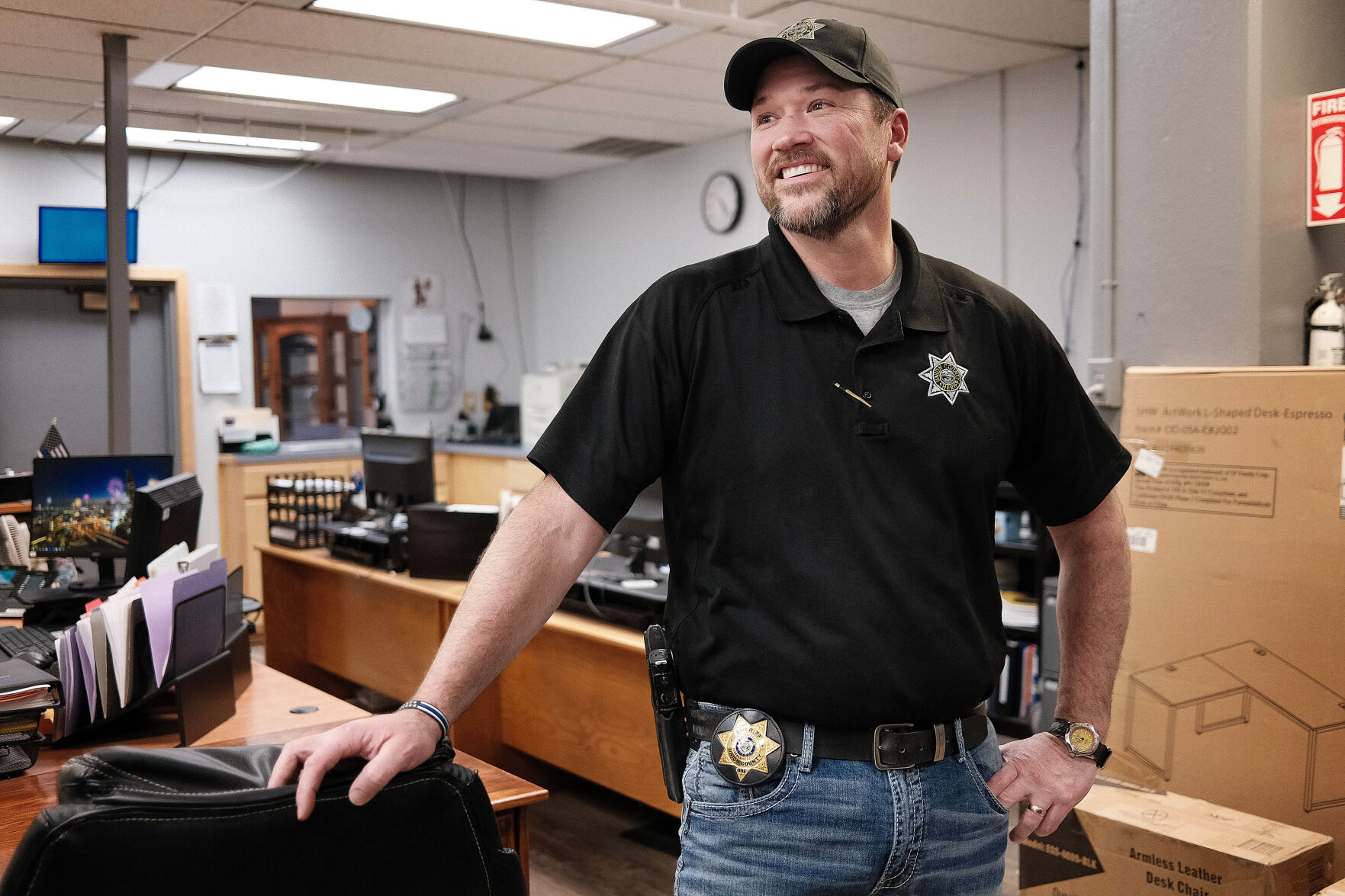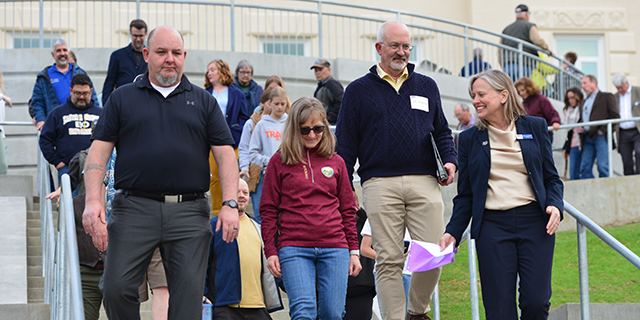Northwest chapter of the Willys Overland Knight Registry visits Union County for summer tour
Published 7:00 am Saturday, August 17, 2024

- Steve and Joy Aleidal's 1931 Willys sits on a trailer waiting to be unloaded on Aug. 12, 2024.
LA GRANDE — When Bruce Forbes purchased his Overland Whippet 55 years ago, he didn’t know he was getting a piece of family history along with his 1926 antique car.
The Whippet was, as Forbes described, a mess. It didn’t run and he pulled the car apart to work on it in his garage.
Later, when his dad was visiting, he took one look at the Whippet and said: “That’s my dad’s old car.”
At first, Forbes, who now lives in Washington state, thought his dad meant it was the same type of car, but quickly realized that his father was speaking literally. Forbes’ grandfather had put a unique trunk on the Whippet he owned. The same trunk was on the vehicle now in Forbes’s garage.
Forbes unknowingly had bought the same car his grandfather had sold 35 years beforehand.
Willys Overland Knight Registry
Flash forward to 2024: Forbes has spent the last three years as president of the Northwest chapter of the Willys Overland Knight Registry — a group of enthusiasts passionate about the related family of Willys Overland cars. The organization aims to bring together people who own, admire and work to preserve sleeve valve engines and these vehicles. (Willys probably is best-known for its design and production of World War II-era jeeps, but the company made other types of vehicles as well.)
The registry got its start in 1960 by Chet Lamberth and John Rawlins, according to the organization’s website. Originally called the National Registry of Willys-Knight Automobiles and others using sleeve-valve action, the group officially became the Willys Overland Knight Registry in 1969.
The Northwest chapter, which was established in 1981, covers the largest geographical area, according to Forbes. The chapter includes the states of Alaska, Western Montana, Oregon, Northern California, Washington, Idaho and British Columbia, Canada. Members meet twice a year for driving tours during the spring and summer. (There is also an annual international meet.)
“We like to drive and we like to visit,” Forbes said.
This year’s summer tour brought the chapter to Union County. Husband-and-wife duo Dale and Ellen Campbell organized the tour. While the La Grande couple have been members of the Willys registry for a few years now, this was their first tour.
The first day of the tour had members roughly following the path of the Oregon Trail with stops at local landmarks. The nearly 100-year-old cars chugged down Adams Avenue before the chapter took a spin around Eastern Oregon University. The group then headed out of town on Gekeler Lane and Foothill Road. They stopped at the Oregon Trail Interpretive Park before driving over to Hot Lake. Members then made their way to Catherine Creek for a picnic hosted by local vintage car club Rusty Wheels.
Day two brought the group out to Baker County to visit the Oregon Trail Interpretive Center. This trip was accompanied by a service truck and trailer. The final day took members north towards Elgin before the tour wrapped up with a banquet at Urban Vine in Island City.
Ellen Campbell said they gave out three awards: best Willys, best Studebaker and the hard-luck trophy. Someone is going to have some bad luck during the tour when you’re dealing with nearly 100-year-old cars.
As if to prove that point, Dale and Ellen Campbell’s 1928 Willys Knight broke down when they took it out for a little test ride just before the tour.
The appeal of old cars
Bob Jaeger brought his 1926 Willys Knight for the tour. His father bought the car when Jaeger was 2 years old; he gave the vehicle to Jaeger when he graduated from high school.
Bob Jaeger’s nephew Caleb Jaeger was also in attendance — although Caleb’s vehicle did not come from the family of Willys Overland cars. He did bring his 1962 Studebaker Lark, which he inherited from his grandmother.
“He grew up with them,” Bob Jaeger said. “Like I did with dad.”
Dale Campbell said he likes the history of the cars. He also appreciates the fact that you don’t have to be a professional to work on them. There are no computers or chips or codes.
Ellen Campbell added that she enjoys saving something that is special and unique from ending up in the junkyard.
For Forbes, it’s all about how fun it is to work on and drive these cars. He said you can really feel the road when you drive.
“These cars — you drive them. They don’t drive you,” Forbes said.
However, he added that restoring these old cars does come with challenges. They are “orphan cars” — meaning they aren’t made anymore. So, it can be difficult to find parts.
On top of that, when you do need a professional to work on the cars, it can also be hard to find people who can do the work.





